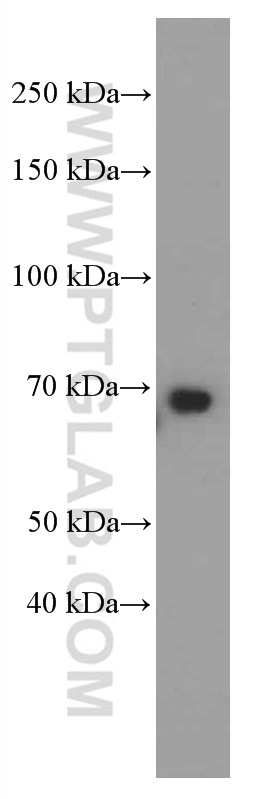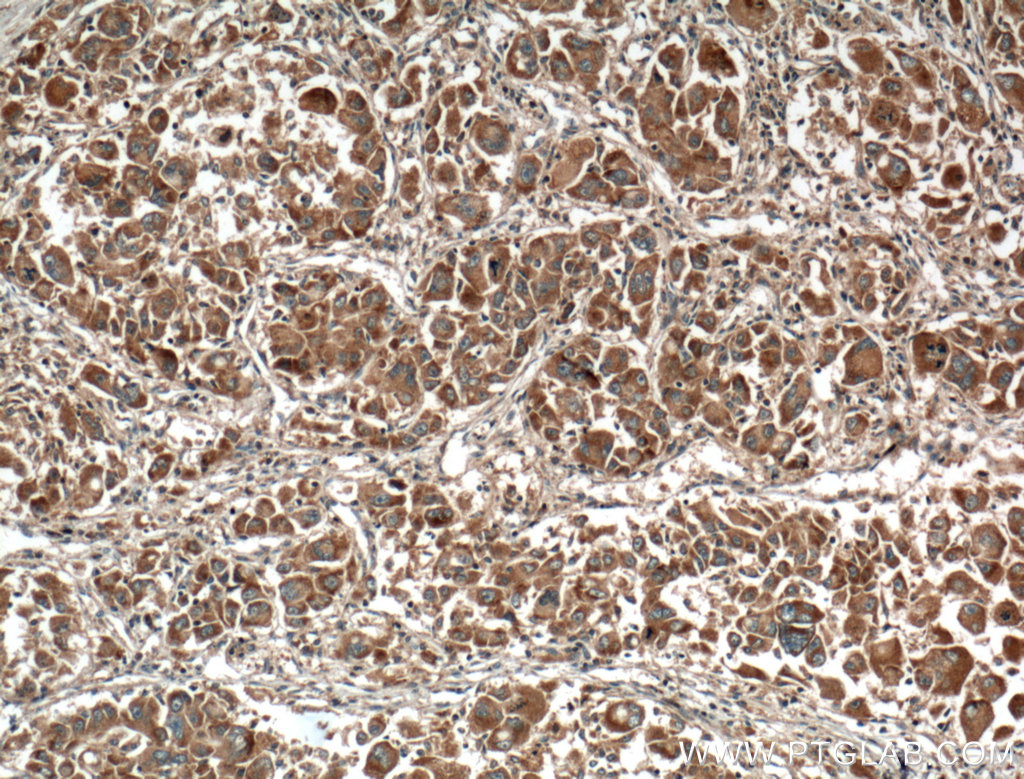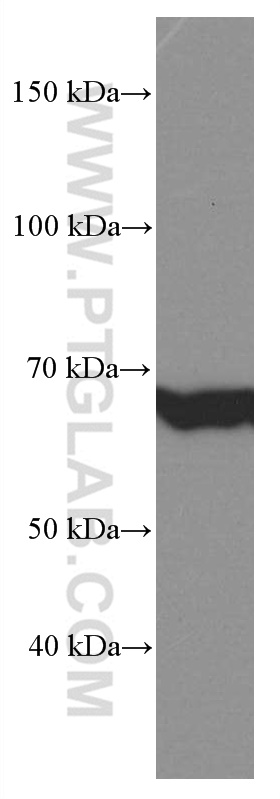验证数据展示
经过测试的应用
| Positive WB detected in | HeLa cells, COLO 320 cells, HepG2 cells |
| Positive IHC detected in | human liver cancer tissue Note: suggested antigen retrieval with TE buffer pH 9.0; (*) Alternatively, antigen retrieval may be performed with citrate buffer pH 6.0 |
推荐稀释比
| 应用 | 推荐稀释比 |
|---|---|
| Western Blot (WB) | WB : 1:1000-1:4000 |
| Immunohistochemistry (IHC) | IHC : 1:200-1:800 |
| It is recommended that this reagent should be titrated in each testing system to obtain optimal results. | |
| Sample-dependent, Check data in validation data gallery. | |
产品信息
66453-1-Ig targets GNPAT in WB, IHC, ELISA applications and shows reactivity with human samples.
| 经测试应用 | WB, IHC, ELISA Application Description |
| 经测试反应性 | human |
| 免疫原 |
CatNo: Ag6740 Product name: Recombinant human GNPAT protein Source: e coli.-derived, PET28a Tag: 6*His Domain: 331-680 aa of BC000450 Sequence: PVSLRSLAAGRMSRSSYNLVPRYIPQKQSEDMHAFVTEVAYKMELLQIENMVLSPWTLIVAVLLQNRPSMDFDALVEKTLWLKGLTQAFGGFLIWPDNKPAEEVVPASILLHSNIASLVKDQVILKVDSGDSEVVDGLMLQHITLLMCSAYRNQLLNIFVRPSLVAVALQMTPGFRKEDVYSCFRFLRDVFADEFIFLPGNTLKDFEEGCYLLCKSEAIQVTTKDILVTEKGNTVLEFLVGLFKPFVESYQIICKHLLSEEEDHFSEEQYLAAVRKFTSQLLDQGTSQCYDVLSSDVQKNALAACVRLGVVEKKKINNNCIFNVNEPATTKLEEMLGCKTPIGKPATAKL 种属同源性预测 |
| 宿主/亚型 | Mouse / IgG2b |
| 抗体类别 | Monoclonal |
| 产品类型 | Antibody |
| 全称 | glyceronephosphate O-acyltransferase |
| 别名 | DAP AT, DAPAT, DHAP AT, DHAPAT, GNPAT |
| 计算分子量 | 77 kDa |
| 观测分子量 | 65-69 kDa |
| GenBank蛋白编号 | BC000450 |
| 基因名称 | GNPAT |
| Gene ID (NCBI) | 8443 |
| RRID | AB_2881822 |
| 偶联类型 | Unconjugated |
| 形式 | Liquid |
| 纯化方式 | Protein A purification |
| UNIPROT ID | O15228 |
| 储存缓冲液 | PBS with 0.02% sodium azide and 50% glycerol, pH 7.3. |
| 储存条件 | Store at -20°C. Stable for one year after shipment. Aliquoting is unnecessary for -20oC storage. |
背景介绍
GNPAT, also named as DAPAT and DHAPAT, belongs to the GPAT/DAPAT family. It is a key enzyme in the biosynthesis of ether phospholipids. GNPAT is localized exclusively within peroxisomes. Full GNPAT activity depends not only on the presence of AGPS, but also on the integrity of substrate channeling from GNPAT to AGPS. (PMID: 21990100) This antibody recognize the 65-69 kDa GNPAT protein.
实验方案
| Product Specific Protocols | |
|---|---|
| IHC protocol for GNPAT antibody 66453-1-Ig | Download protocol |
| WB protocol for GNPAT antibody 66453-1-Ig | Download protocol |
| Standard Protocols | |
|---|---|
| Click here to view our Standard Protocols |






